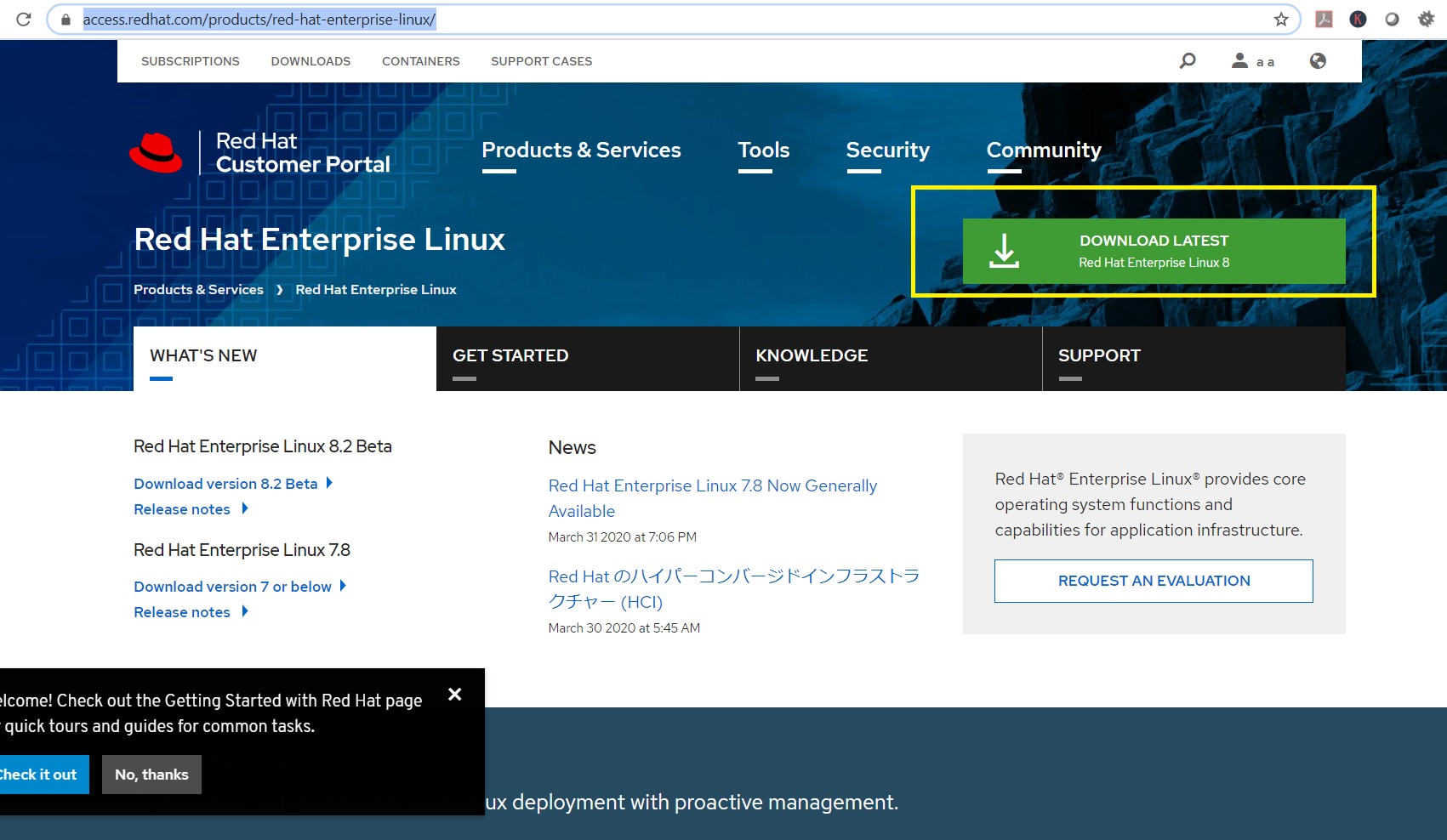

- #Red hat linux iso image for virtualbox install
- #Red hat linux iso image for virtualbox download
- #Red hat linux iso image for virtualbox windows
My installation was bare-bones, just enough for the tools (compiler tool chain primarily) without any games or social media or office software. If you don’t do that you’ll see nothing but constant tearing and flashing of the virtual display. You pick that at the login screen (see the little gear on the lower right beneath where you type in your password). Wayland does not play well with VirtualBox and it hasn’t since Wayland was first officially released with RHEL, going back to VirtualBox 5.x.
#Red hat linux iso image for virtualbox windows
And finally, for running RHEL 8 as a VM in VirtualBox 6.0.8 on macOS Mojave 10.14.5, you need to select running the VM’s desktop as a standard Xorg X windows system, rather than using Wayland. Seriously, if you want that look and feel then buy a Mac. That feature looks great on macOS, but it’s always looked bad on the Linux desktop. This is yet another attempt to copy an Apple macOS feature. I also enabled all the control buttons on the right corner of each window and enabled having the application’s control menu on the application’s left side. For example I added gnome-tweaks to get the Tweak Tool and enable dark mode via Adwaita-dark.

So the quality of the tools in RHEL 8 is, in my not-so-humble-opinion, a big step up over RHEL 7, and about time.

And the tools supplied in RHEL 8 are also fairly up-to-date gcc is at version 8.2.1, git is at 2.18.1, and Python (or python3) is at version 3.6.8 (python2 isn’t even installed). RHEL 8 is actually using a fairly recent Linux kernel, 4.18, as apposed to RHEL 7 and RHEL 6, which stuck with a version 3 kernel, heavily patched. That’s another reason I’ll get my images from CentOS and go elsewhere for my cloud needs. But that’s countered in part that Red Hat is now owned by IBM, and I can assure you that I at least am not happy about IBM in the mix. Yes, I know all about Red Hat’s push with Kubernetes. And I’ve watched Ubuntu pushing out not just into the server side but into cloud containers as well IoT images. I’ve read a number of stories where developers, especially AI developers, are now buying machines with Ubuntu desktop pre-installed. Red Hat’s biggest competitor I believe to be Ubuntu. I think that desperation might be rooted in the observation that Red Hat might not be relevant to a lot of developers these days. It still annoys me I have to register to get the updates, which is one big reason I prefer CentOS CentOS updates are just a simple yum away. After installation as a VM in Oracle’s VirtualBox (6.0.8 as of this writing) on macOS 10.14.5, and after registering with my developer credentials to keep my installation up-to-date, I was not greeted with any kind of time limitation warning.
#Red hat linux iso image for virtualbox download
When I went and logged recently into Red Hat Developer, I was immediately led to the download section where I easily found and downloaded my ISO copy. Everywhere I look and read there are articles about RHEL 8 as a development platform. RHEL 8 on the other hand is noticeably different.
#Red hat linux iso image for virtualbox install
After installation I was reminded periodically that my ability to install updates was time limited. In the past, when I went to download and install a developer version of RHEL 7, I jumped through a fair number of hoops to get an ISO. I say this in large part noting how RHEL 8 is being launched. It looks like there might be just a tinge of desperation at Red Hat Central. But it would appear that RHEL 8 now falls within that categorization of easily up-to-date and easy-to-install. I haven’t used Fedora since its late teen releases, and I don’t expect I ever will again. There are a lot of distros that can do this, but Fedora isn’t one of them. All I ask of my Linux distributions is that they are reasonably up to date in the core tools and will work without special handling in just about any environment.

If I wanted a RHEL-like distribution with up-to-date tools, why not use Fedora? Because I DO NOT want to deal with Fedora’s peculiarities and periodic ‘bleeding edge’ breaking changes within Fedora releases just to keep up with the latest packages. The upgrades across the board are substantial enough. But I stayed away from checking this latest RHEL release, due in no small part to my less than happy experiences using RHEL 7 and its unpaid version CentOS 7.įrom what I’ve seen so far it appears that RHEL 8 may actually deserve its primary version increase. It’d been out in beta form before that, as I noted by a number of comments in various fora around the end of 2018. RHEL 8 was formally released, a little less than a month ago from the date of this post. Instead I look at it from the perspective of an end user who’s used older versions, and try to determine if I should use this latest version. It’s not much, so if you’re looking for something far more in depth, then you won’t find it here. Here’s my personal review of Red Hat’s latest, RHEL 8.


 0 kommentar(er)
0 kommentar(er)
